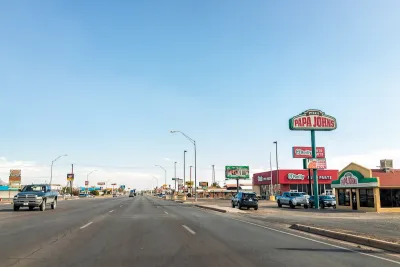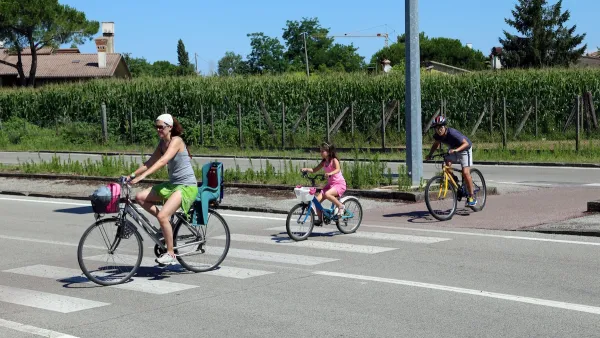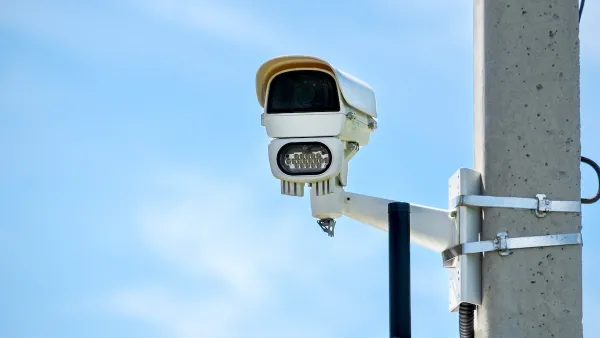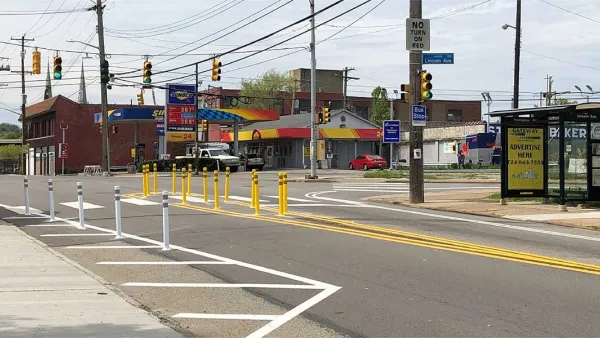A classic example of the notorious ‘stroad,’ aging state roads that aim to serve all users with piecemeal infrastructure solutions fail to facilitate safe, efficient transportation.

In a memorandum released in late July, the U.S. Department of Transportation (USDOT) highlighted the fact that states can take advantage of dozens of federal programs to improve “legacy” or “orphan” highways, reports Jeff Wood in Streetsblog USA.
These roads, built early in a city’s development, have been adjusted and augmented, often haphazardly, to meet the needs of increased traffic and new types of mobility. “That Frankenstein of a human-centered street and a car-centered, highway-style road is often referred to as a ‘stroad’ — and state highway agencies aren't big fans of them either, since all those pesky pedestrians and stoplights make legacy highways highly inefficient at moving cars.” In Washington state, for example, “the crash fatality rate on legacy highways is than three times higher than the rest of the roadway system.”
According to Wood, “states can already leverage 27 different federal programs in the Bipartisan Infrastructure Law to transform these roads with traffic calming measures, wider sidewalks, bike lanes and more. Twelve of those programs are ‘formula’ grants, which means a certain amount of money is guaranteed to each state based on a DOT calculation, and states don't even need to compete for the funds.”
FULL STORY: ‘Legacy Highways’ Are Some of Our Most-Dangerous Stroads — And It’s Time to Fix Them, US DOT Says

National Parks Layoffs Will Cause Communities to Lose Billions
Thousands of essential park workers were laid off this week, just before the busy spring break season.

Retro-silient?: America’s First “Eco-burb,” The Woodlands Turns 50
A master-planned community north of Houston offers lessons on green infrastructure and resilient design, but falls short of its founder’s lofty affordability and walkability goals.

Delivering for America Plan Will Downgrade Mail Service in at Least 49.5 Percent of Zip Codes
Republican and Democrat lawmakers criticize the plan for its disproportionate negative impact on rural communities.

Test News Post 1
This is a summary

Test News Headline 46
Test for the image on the front page.

Balancing Bombs and Butterflies: How the National Guard Protects a Rare Species
The National Guard at Fort Indiantown Gap uses GIS technology and land management strategies to balance military training with conservation efforts, ensuring the survival of the rare eastern regal fritillary butterfly.
Urban Design for Planners 1: Software Tools
This six-course series explores essential urban design concepts using open source software and equips planners with the tools they need to participate fully in the urban design process.
Planning for Universal Design
Learn the tools for implementing Universal Design in planning regulations.
EMC Planning Group, Inc.
Planetizen
Planetizen
Mpact (formerly Rail~Volution)
Great Falls Development Authority, Inc.
HUDs Office of Policy Development and Research
NYU Wagner Graduate School of Public Service





























